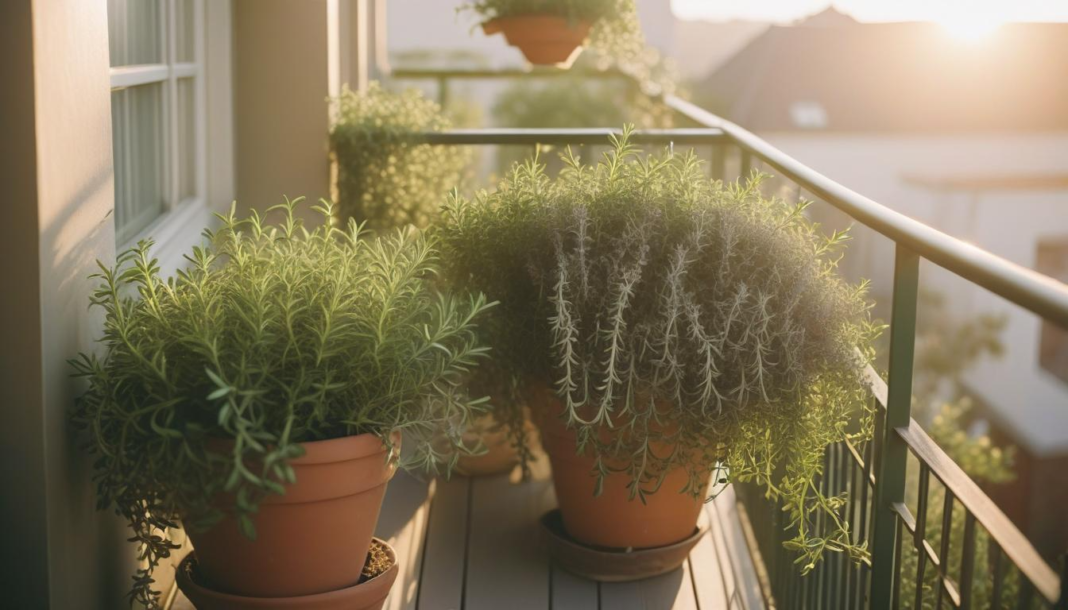Herb Gardening for Small Balconies: Top Picks for Compact Spaces
Imagine stepping out onto your small balcony, the morning sun warming your face, and being greeted by a lush, fragrant oasis of herbs. The scent of basil, the delicate leaves of mint, and the vibrant green of parsley all within arm’s reach. This isn’t just a dream—it’s entirely possible, even in the smallest of spaces. Herb gardening on a small balcony is not only practical but also deeply rewarding. It’s a way to connect with nature, enhance your cooking, and create a serene retreat in the heart of the city. Let’s dive into the world of balcony herb gardening and discover the best herbs for compact spaces, along with tips to help you cultivate your own green haven.
Why Grow Herbs on a Balcony?
Living in an apartment or a home with limited outdoor space doesn’t mean you have to give up on gardening. Balconies, no matter how small, can be transformed into productive and beautiful herb gardens. Here’s why you should consider it:
- Fresh Flavors at Your Fingertips: Imagine plucking fresh basil for your pasta or snipping some chives for your morning omelet. Homegrown herbs are fresher and more flavorful than store-bought ones.
- Space Efficiency: Herbs are compact and don’t require much room to thrive. With the right containers and care, you can grow a variety of herbs even in a tiny space.
- Aesthetic Appeal: Herbs are not just functional; they’re also beautiful. Their varied textures, colors, and scents can turn your balcony into a mini paradise.
- Therapeutic Benefits: Gardening is a proven stress reliever. Tending to your herbs can be a calming, meditative practice that brings joy and a sense of accomplishment.
Top Herbs for Small Balcony Gardens
When space is limited, it’s important to choose herbs that are easy to grow, don’t require much room, and offer maximum utility. Here are some top picks:
1. Basil
Why Grow It? Basil is a kitchen superstar, perfect for pasta, salads, and pesto. It’s also incredibly easy to grow.
Growing Tips: Basil loves sunlight, so place it in a spot that gets at least 6 hours of sun daily. Keep the soil moist but not waterlogged.
Fun Fact: There are many varieties of basil, including sweet basil, Thai basil, and purple basil, each with its own unique flavor.
2. Mint
Why Grow It? Mint is versatile, refreshing, and perfect for teas, cocktails, and desserts. It’s also a fast grower.
Growing Tips: Mint can be invasive, so it’s best grown in a container to prevent it from taking over. It thrives in partial shade and moist soil.
Fun Fact: There are over 600 varieties of mint, including peppermint, spearmint, and chocolate mint.
3. Parsley
Why Grow It? Parsley is a culinary workhorse, great for garnishing and adding flavor to soups, stews, and salads.
Growing Tips: Parsley prefers well-draining soil and moderate sunlight. It’s a biennial plant, meaning it will last for two growing seasons.
Fun Fact: Parsley is rich in vitamins A and C, making it not just tasty but also nutritious.
4. Thyme
Why Grow It? Thyme is a hardy herb with a subtle, earthy flavor that pairs well with meats, vegetables, and sauces.
Growing Tips: Thyme loves full sun and well-draining soil. It’s drought-tolerant, making it a low-maintenance choice.
Fun Fact: Thyme has been used for centuries for its medicinal properties, including as a natural antiseptic.
5. Chives
Why Grow It? Chives are mild and onion-like, perfect for adding a fresh kick to dishes. They also produce beautiful purple flowers.
Growing Tips: Chives grow well in pots and prefer full sun to partial shade. They’re perennial, meaning they’ll come back year after year.
Fun Fact: Chive flowers are edible and make a lovely addition to salads.
6. Rosemary
Why Grow It? Rosemary is a fragrant, woody herb that’s perfect for roasting meats and vegetables.
Growing Tips: Rosemary thrives in full sun and well-draining soil. It’s drought-tolerant and doesn’t need frequent watering.
Fun Fact: Rosemary is often associated with memory and remembrance, and it’s said to improve concentration.
7. Oregano
Why Grow It? Oregano is a must-have for Italian and Mediterranean dishes. It’s also a hardy plant that’s easy to grow.
Growing Tips: Oregano prefers full sun and well-draining soil. It’s drought-tolerant and doesn’t require much maintenance.
Fun Fact: Oregano is rich in antioxidants and has been used for its medicinal properties for centuries.
8. Cilantro (Coriander)
Why Grow It? Cilantro is essential for Mexican, Indian, and Asian cuisines. Both its leaves and seeds (coriander) are used in cooking.
Growing Tips: Cilantro prefers cooler temperatures and partial shade. It bolts (goes to seed) quickly in hot weather, so plant it in spring or fall.
Fun Fact: Cilantro is a love-it-or-hate-it herb due to its polarizing flavor, which some people describe as soapy.
Tips for Successful Balcony Herb Gardening
- Choose the Right Containers: Opt for pots with good drainage to prevent waterlogging. Hanging baskets, vertical planters, and railing planters are great space-saving options.
- Use Quality Soil: Herbs thrive in well-draining, nutrient-rich soil. Consider using a potting mix designed for container gardening.
- Sunlight Matters: Most herbs need at least 4-6 hours of sunlight daily. Observe your balcony’s sun patterns and place your herbs accordingly.
- Water Wisely: Overwatering is a common mistake. Check the soil’s moisture level before watering—herbs generally prefer slightly dry conditions.
- Prune Regularly: Regular pruning encourages bushier growth and prevents herbs from becoming leggy. Plus, it means more herbs for your kitchen!
- Fertilize Sparingly: Herbs don’t need much fertilizer. A light application of organic fertilizer every 4-6 weeks is usually sufficient.
- Protect from Pests: Keep an eye out for pests like aphids and spider mites. Natural remedies like neem oil or insecticidal soap can help.
Creating Your Balcony Herb Garden: A Step-by-Step Guide
- Assess Your Space: Measure your balcony and note how much sunlight it receives. This will help you decide which herbs to grow and where to place them.
- Select Your Herbs: Choose herbs based on your cooking preferences and the growing conditions of your balcony.
- Gather Supplies: You’ll need pots, soil, seeds or seedlings, and basic gardening tools.
- Plant with Care: Follow the planting instructions for each herb, ensuring proper spacing and depth.
- Arrange Creatively: Use vertical space with hanging planters or shelves. Group herbs with similar sunlight and water needs together.
- Enjoy the Process: Gardening is a journey. Take time to nurture your plants, observe their growth, and savor the rewards.
A Story of Transformation
Meet Sarah, a busy professional living in a small apartment in the city. Her balcony was once a cluttered space, filled with unused furniture and forgotten items. One day, inspired by a cooking show, she decided to grow her own herbs. She started small, with a few pots of basil and mint. Over time, her balcony transformed into a vibrant herb garden. The scent of rosemary greeted her in the morning, and the sight of fresh parsley made her smile. Cooking became a joy, as she experimented with new recipes using her homegrown herbs. Her balcony was no longer just a space—it was her sanctuary.
Final Thoughts
Herb gardening on a small balcony is more than just a hobby; it’s a way to bring nature into your urban life. With a little effort and creativity, you can create a thriving herb garden that enhances your meals, beautifies your space, and nourishes your soul. So, grab a pot, some soil, and your favorite herb seeds, and start your balcony gardening journey today. Your future self—and your taste buds—will thank you!

